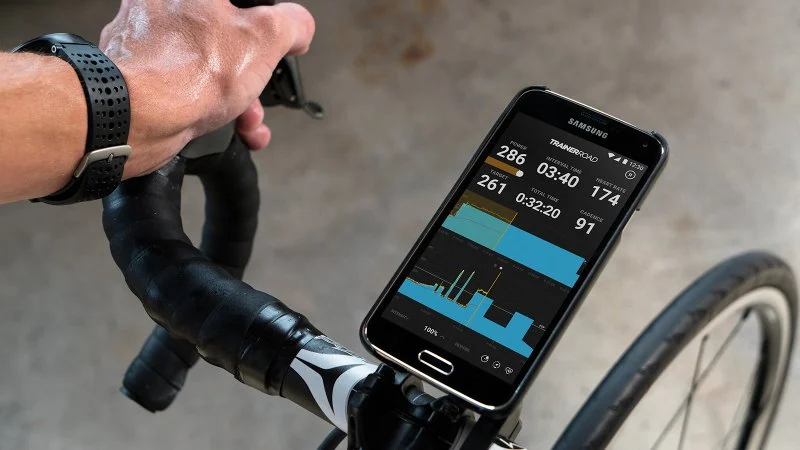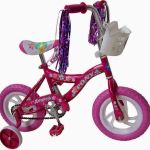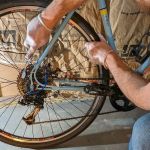
- Introduction: Why Tracking Cycling Progress Matters
- Best Methods to Track Your Cycling Progress
- Tools and Apps for Effective Tracking
- Setting and Achieving Cycling Goals
- Analyzing Your Cycling Data
- How to Improve Your Performance Based on Your Data
Introduction: Why Tracking Cycling Progress Matters
Tracking your cycling progress is essential for improving your performance, reaching new goals, and staying motivated. Whether you're a beginner or a seasoned cyclist, monitoring your rides helps you understand your strengths and weaknesses, making it easier to adjust your training routine. In this article, we will explore various methods for tracking your cycling progress effectively and how you can use that data to improve your cycling experience.
Best Methods to Track Your Cycling Progress
There are several ways you can track your cycling progress, depending on your preferences and the type of data you want to monitor. Here are some of the most common methods:
- Manual Logging: You can start by keeping a simple cycling log where you record details about your rides, such as the distance, duration, average speed, and any notable observations (e.g., weather conditions, terrain). This method is straightforward but can be time-consuming if you're cycling regularly.
- GPS Devices: Using a GPS-enabled device like a bike computer or a smartwatch can help you track detailed metrics such as speed, distance, elevation gain, and heart rate. This method is highly accurate and gives you real-time feedback during your ride.
- Fitness Trackers and Apps: Mobile apps like Strava, Komoot, and Ride with GPS are excellent for tracking your progress over time. These apps allow you to record your rides, set goals, and analyze your performance. They also provide community features that let you compare your results with other cyclists, making it easy to stay motivated.
Tools and Apps for Effective Tracking
In addition to the methods listed above, there are a variety of tools and apps designed specifically to help you track your cycling progress. Here are some of the best options:
- Strava: One of the most popular cycling apps, Strava allows cyclists to track their rides, set personal goals, and join challenges. You can also connect with friends and follow their progress, which is a great way to stay motivated.
- Garmin Connect: If you're using a Garmin device, the Garmin Connect app is a comprehensive tool for tracking your cycling data. It provides detailed insights into your performance, including power, cadence, and heart rate, allowing you to fine-tune your training.
- Wahoo Fitness: Wahoo's app works seamlessly with their bike computers and smart trainers. It provides cycling metrics in real-time and offers various training plans to help you improve your performance.
Setting and Achieving Cycling Goals
Setting clear, realistic goals is an important part of tracking your progress. Here are a few tips to help you set goals and stay on track:
- Start with Simple Goals: If you're new to cycling, begin by setting simple goals, such as riding for 30 minutes a day or reaching a certain distance by the end of the week. As you gain confidence and experience, you can increase the complexity of your goals.
- Track Milestones: Break your long-term goals into smaller, achievable milestones. For example, if your goal is to complete a 50-mile ride, start by tracking your progress in increments (e.g., 10 miles, 20 miles) to ensure you're making steady improvements.
- Use Data to Adjust Goals: As you track your progress, use the data to adjust your goals accordingly. If you’re consistently hitting your target, you might want to increase the challenge. If you’re struggling, consider modifying your goals to be more achievable.
Analyzing Your Cycling Data
Once you've tracked several rides, it's time to analyze your data. By looking at your stats, you can identify patterns and areas for improvement. Here are a few key metrics to focus on:
- Speed: Your average speed is a good indicator of how fast you're cycling. Track improvements over time, and try to push yourself during training to achieve faster speeds.
- Distance: Tracking distance helps you understand how much you're cycling and how far you're able to go in a single ride. It's important to gradually increase your distance to build endurance.
- Heart Rate: Monitoring your heart rate during rides allows you to understand your effort levels and optimize your workouts. Aim for specific heart rate zones based on your fitness goals, whether it's improving stamina or burning fat.
- Elevation Gain: If you're cycling in hilly or mountainous areas, tracking elevation gain is crucial. It indicates the intensity of your ride and can help you gauge your climbing ability.
How to Improve Your Performance Based on Your Data
Once you've analyzed your cycling data, it's time to use it to improve your performance. Here are some tips to help you enhance your results:
- Increase Training Intensity: Based on your data, identify areas where you can push harder. For example, if your average speed has plateaued, try incorporating interval training to increase your intensity.
- Focus on Weak Areas: If you notice certain metrics, such as cadence or heart rate, are lagging behind, tailor your training to improve those areas. Strengthening your weak points can lead to overall performance improvements.
- Rest and Recovery: Don't forget to allow time for recovery. Overtraining can lead to burnout and injury. Use your data to track your recovery times and ensure you're balancing hard training with rest.
Incorporating these strategies into your cycling routine will help you track progress effectively and continuously improve your performance. For more tips, training plans, and cycling products, visit Cycling Guider.







 Billet BMX5.0 (2 reviews)
Billet BMX5.0 (2 reviews) Far East Children Bicycle Factory1.0 (1 reviews)
Far East Children Bicycle Factory1.0 (1 reviews) Archer Motorsports, Inc.4.0 (8 reviews)
Archer Motorsports, Inc.4.0 (8 reviews) YEP Bike Works4.0 (55 reviews)
YEP Bike Works4.0 (55 reviews) Gorham Bike & Ski4.0 (498 reviews)
Gorham Bike & Ski4.0 (498 reviews) Alchemy Bikes4.0 (37 reviews)
Alchemy Bikes4.0 (37 reviews) How to Teach Kids to Ride a Bike: A Step-by-Step Guide for Parents
How to Teach Kids to Ride a Bike: A Step-by-Step Guide for Parents Tips for Riding on Busy City Streets: Smart Strategies for Urban Cyclists
Tips for Riding on Busy City Streets: Smart Strategies for Urban Cyclists Best US National Parks for Mountain Biking: Ride Epic Trails Across America
Best US National Parks for Mountain Biking: Ride Epic Trails Across America Best Aero Helmets for Time Trials and Racing
Best Aero Helmets for Time Trials and Racing How to Clean and Lubricate Your Bike Chain Like a Pro
How to Clean and Lubricate Your Bike Chain Like a Pro 10 Must-Have Items for Long-Distance Cycling Trips
10 Must-Have Items for Long-Distance Cycling Trips